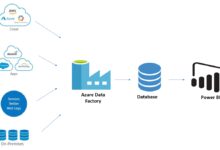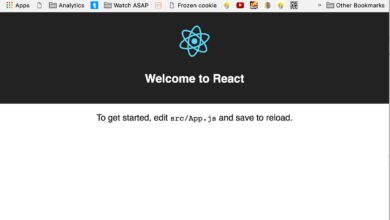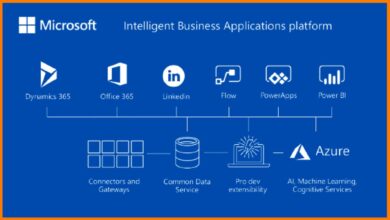Azure Login Portal: 7 Ultimate Tips for Effortless Access
Accessing the Azure login portal doesn’t have to be complicated. Whether you’re a cloud beginner or an IT pro, mastering secure and efficient logins is essential for managing your Microsoft cloud resources with confidence and speed.
Understanding the Azure Login Portal

The Azure login portal is the primary gateway to Microsoft Azure, a comprehensive cloud computing platform used by millions of organizations worldwide. When you visit portal.azure.com, you’re directed to the official Azure sign-in page where users authenticate to access virtual machines, databases, networking tools, and more. This portal is more than just a login screen—it’s the control center for your entire Azure ecosystem.
What Is the Azure Login Portal?
The Azure login portal refers to the secure authentication interface that allows users to sign in to their Microsoft Azure accounts. It supports multiple identity types, including work or school accounts (Azure Active Directory) and personal Microsoft accounts, depending on the subscription type and configuration.
- It serves as the entry point to manage cloud infrastructure.
- It integrates with Azure Active Directory (Azure AD) for identity and access management.
- It supports single sign-on (SSO) for enterprise environments.
Microsoft designed the Azure login portal to be both user-friendly and highly secure, ensuring that only authorized individuals can access sensitive cloud environments. The portal also supports conditional access policies, which allow administrators to enforce rules based on user location, device compliance, and risk level.
How the Azure Login Portal Works
When a user navigates to the Azure login portal, they are prompted to enter their email address associated with their Azure subscription. After entering the username, the system identifies the type of account and routes the authentication request accordingly—either through Azure AD or a personal Microsoft account.
“The Azure login portal is not just a door—it’s a smart gatekeeper that verifies identity, enforces policies, and logs every access attempt.” — Microsoft Cloud Security Guide
Once the identity is validated, multi-factor authentication (MFA) may be triggered if enabled. This adds an extra layer of security by requiring a second form of verification, such as a phone call, text message, or authentication app notification. After successful authentication, users are redirected to the Azure dashboard, where they can begin managing resources.
- The portal uses OAuth 2.0 and OpenID Connect protocols for secure authentication.
- It supports federated identity via SAML 2.0 for enterprise integrations.
- Login attempts are logged in Azure Monitor and Azure AD Sign-In logs for auditing.
Step-by-Step Guide to Accessing the Azure Login Portal
Logging into the Azure portal is a straightforward process, but understanding each step ensures a smooth experience, especially for new users or those managing multiple subscriptions.
Navigating to the Official Azure Login Page
To begin, open a modern web browser such as Microsoft Edge, Google Chrome, or Firefox and go to https://portal.azure.com. This is the official URL for the Azure login portal. Avoid using third-party links or search engine results that may lead to phishing sites.
- Always verify the URL in the address bar to ensure it reads ‘portal.azure.com’.
- Bookmark the page for quick future access.
- Use private/incognito mode if logging in from a shared or public computer.
Microsoft recommends using the latest version of supported browsers to avoid compatibility issues. Older versions may not support modern authentication methods like passwordless sign-in or biometric verification.
Entering Your Credentials Correctly
After reaching the login page, enter your email address or username. This should be the account associated with your Azure subscription—typically a work or school email (e.g., user@company.com) rather than a personal @outlook.com or @hotmail.com account unless specifically configured.
If your organization uses Azure AD, the system will automatically detect your tenant and prompt for the correct password. In some cases, you may be redirected to your company’s custom login page with branding and specific security requirements.
- Ensure Caps Lock is off and keyboard layout is correct.
- Use copy-paste cautiously—some password managers may not autofill correctly on first load.
- If you see ‘This account does not exist’, double-check the email spelling or contact your administrator.
Completing Multi-Factor Authentication (MFA)
After entering your password, you may be prompted for multi-factor authentication. MFA is a critical security feature that helps prevent unauthorized access even if passwords are compromised.
Common MFA methods include:
- Microsoft Authenticator app push notification
- Text message with a verification code
- Phone call with automated voice response
- Hardware security key (e.g., YubiKey)
- Biometric verification on trusted devices
Organizations can configure MFA through the Azure portal under Security > Authentication methods. Admins can enforce MFA for all users or apply it conditionally based on risk, location, or device status.
“Over 99.9% of account compromises can be prevented by enabling multi-factor authentication.” — Microsoft Digital Defense Report
Common Issues with the Azure Login Portal and How to Fix Them
Despite its reliability, users occasionally encounter issues when trying to log in to the Azure login portal. Understanding these problems and their solutions can save time and reduce frustration.
Forgot Password or Locked Account
One of the most common issues is forgetting your password or getting locked out due to multiple failed attempts. The Azure login portal provides a self-service password reset (SSPR) option for eligible accounts.
To reset your password:
- Click ‘Can’t access your account?’ on the login screen.
- Enter your email address and complete the CAPTCHA.
- Choose a verification method (email, phone, or authenticator app).
- Follow the prompts to create a new password.
If SSPR is not enabled, contact your Azure administrator to reset the password manually. Administrators can do this from the Azure portal under Azure Active Directory > Users > Reset password.
Browser Compatibility and Cache Issues
Sometimes, the Azure login portal fails to load properly due to outdated browsers, disabled JavaScript, or corrupted cache. These technical glitches can mimic authentication errors.
To resolve browser-related issues:
- Clear your browser cache and cookies.
- Disable browser extensions that may interfere with login scripts.
- Try a different browser or device.
- Ensure JavaScript and TLS 1.2+ are enabled.
Microsoft maintains a list of supported browsers for the Azure portal, which is regularly updated to reflect security and performance standards.
Conditional Access Policy Blocks
Conditional Access (CA) policies are security rules set by administrators to control how and when users can access Azure resources. If you’re blocked from logging in, it might be due to a CA policy enforcing requirements like device compliance, approved locations, or MFA.
For example, a policy might prevent login from:
- Unmanaged devices
- Geographic regions outside your country
- Networks flagged as high-risk
- Devices without BitLocker encryption
If you believe you’re being incorrectly blocked, contact your IT department. They can review sign-in logs in Azure AD > Sign-in logs to identify the exact reason for the denial.
Security Best Practices for the Azure Login Portal
Securing access to the Azure login portal is one of the most important steps in protecting your cloud environment. A compromised account can lead to data breaches, unauthorized resource creation, or ransomware attacks.
Enable Multi-Factor Authentication (MFA)
As previously mentioned, MFA is one of the most effective ways to secure your Azure login portal access. Even if a password is stolen, MFA prevents unauthorized access by requiring a second verification factor.
Microsoft recommends enabling MFA for all users, especially those with administrative privileges. You can enforce MFA through:
- Legacy per-user MFA (being deprecated)
- Conditional Access policies (recommended)
- Identity Protection risk-based policies
Conditional Access allows for more granular control, such as requiring MFA only for high-risk sign-ins or when accessing sensitive applications.
Use Conditional Access and Risk-Based Policies
Conditional Access in Azure AD allows administrators to create policies that automatically enforce security controls based on user behavior, device state, location, and risk level.
Examples of effective Conditional Access policies include:
- Require MFA for all external users (guests)
- Block access from anonymous IP addresses (e.g., Tor networks)
- Require compliant devices for accessing confidential data
- Allow access only from trusted countries
These policies are configured in the Azure portal under Azure Active Directory > Security > Conditional Access. They integrate with Azure AD Identity Protection, which uses machine learning to detect suspicious login patterns.
“Conditional Access is the cornerstone of Zero Trust security in Azure.” — Microsoft Security Documentation
Monitor Sign-In Logs and Anomalies
Regularly reviewing Azure AD sign-in logs helps detect suspicious activity early. You can access these logs in the Azure portal under Azure Active Directory > Monitoring > Sign-in logs.
Key details to monitor include:
- Unusual login times (e.g., 3 AM local time)
- Logins from unexpected countries or IP addresses
- Multiple failed attempts followed by a success
- Sign-ins from unfamiliar devices or browsers
You can also set up alerts using Azure Monitor or Microsoft Sentinel to notify administrators of high-risk sign-ins in real time.
Advanced Features of the Azure Login Portal
Beyond basic authentication, the Azure login portal offers advanced capabilities that enhance security, usability, and integration with enterprise systems.
Passwordless Authentication Options
Microsoft is moving toward a passwordless future, and the Azure login portal supports several passwordless authentication methods:
- Microsoft Authenticator App: Users approve sign-ins with a tap or biometric verification.
- Windows Hello for Business: Uses biometrics (fingerprint, facial recognition) on Windows devices.
- FIDO2 Security Keys: Physical keys like YubiKey that provide strong phishing-resistant authentication.
- Passkeys: Device-bound credentials that replace passwords entirely.
These methods are more secure than traditional passwords because they are resistant to phishing, replay attacks, and credential stuffing. Organizations can enable passwordless sign-in through Azure AD settings and gradually roll it out to users.
Single Sign-On (SSO) Integration
The Azure login portal supports seamless single sign-on for enterprise applications, allowing users to access multiple services without re-entering credentials.
SSO is achieved through:
- SAML 2.0 for web applications
- OpenID Connect for modern apps
- Password-based SSO for legacy systems
- Integrated Windows Authentication (IWA) for on-premises apps
Administrators can configure SSO in the Azure portal under Azure Active Directory > Enterprise Applications. This reduces password fatigue and improves user productivity while maintaining security.
Custom Branding and User Experience
Organizations can customize the Azure login portal experience with their own branding, including logos, background images, and corporate colors. This helps users recognize the legitimate login page and avoid phishing attacks.
To configure branding:
- Go to Azure Active Directory > User settings > Sign-in customization.
- Upload your company logo and background image.
- Set custom text and links (e.g., password reset or help desk).
Custom branding increases user trust and reinforces security awareness, especially in large enterprises with thousands of employees.
Managing Multiple Subscriptions via the Azure Login Portal
Many users and organizations manage multiple Azure subscriptions, whether for different departments, environments (dev/test/prod), or clients. The Azure login portal provides tools to switch between subscriptions seamlessly.
Switching Between Subscriptions
After logging in, users can view and switch between their assigned subscriptions using the subscription filter in the top navigation bar. Click the dropdown next to ‘Subscriptions’ to see all available options.
- You must have at least Reader role access to a subscription to see it.
- Role-Based Access Control (RBAC) determines what actions you can perform.
- Use Management Groups to organize subscriptions hierarchically.
This feature is especially useful for cloud administrators, consultants, and developers working across multiple projects.
Using Azure Lighthouse for Cross-Tenant Management
Azure Lighthouse allows service providers and enterprises to manage multiple Azure tenants from a single portal. This is ideal for MSPs (Managed Service Providers) or large organizations with decentralized IT teams.
With Azure Lighthouse:
- You can delegate resource management across tenants.
- View consolidated billing and usage reports.
- Apply consistent policies and governance.
It enhances operational efficiency while maintaining security and compliance boundaries.
Role-Based Access Control (RBAC) Explained
RBAC is a fundamental security model in Azure that defines who can do what within a subscription. Permissions are assigned through roles like Owner, Contributor, and Reader.
- Owner: Full access, including role assignment.
- Contributor: Can create and manage resources but not assign roles.
- Reader: View-only access.
Custom roles can be created for specific needs. RBAC is managed in the Azure portal under Subscriptions > Access control (IAM).
Alternative Access Methods to the Azure Login Portal
While the web-based Azure login portal is the most common access method, Microsoft provides alternative ways to interact with Azure services, especially for automation and command-line operations.
Azure CLI and PowerShell Login
For developers and DevOps engineers, the Azure Command-Line Interface (CLI) and Azure PowerShell offer powerful ways to manage Azure resources without using the web portal.
To log in via Azure CLI:
- Run
az loginin your terminal. - A browser window opens for authentication via the Azure login portal.
- After successful login, CLI commands can be executed.
Similarly, Azure PowerShell uses Connect-AzAccount to authenticate. Both tools support service principal authentication for automated scripts.
Service Principals and Application Authentication
Service principals allow applications, scripts, or services to authenticate to Azure without human interaction. They are essential for CI/CD pipelines, scheduled jobs, and backend services.
To create a service principal:
- Use the Azure portal, CLI, or PowerShell.
- Assign RBAC roles to define permissions.
- Store credentials securely (e.g., Azure Key Vault).
This method enhances security by avoiding hardcoded credentials and enabling rotation and auditing.
Using Azure AD B2C for Customer Identity Management
Azure AD B2C (Business-to-Customer) is a separate identity service that allows organizations to manage customer identities for public-facing applications. While not part of the standard Azure login portal, it integrates with it for administrative access.
Azure AD B2C supports:
- Social identity providers (Google, Facebook, Apple)
- Email/password sign-up
- Customizable user journeys and branding
Administrators still use the Azure login portal to configure and monitor B2C tenants, making it a complementary service.
How do I access the Azure login portal?
You can access the Azure login portal by visiting https://portal.azure.com and entering your work or school email address and password. Multi-factor authentication may be required.
What should I do if I forget my Azure password?
If you forget your password, click ‘Can’t access your account?’ on the login screen to start the self-service password reset process. If SSPR is not enabled, contact your Azure administrator.
Why am I unable to log in to the Azure portal?
Common reasons include incorrect credentials, MFA issues, browser problems, or being blocked by a Conditional Access policy. Check your internet connection, clear your cache, or contact your IT team for assistance.
Is the Azure login portal secure?
Yes, the Azure login portal is highly secure, supporting multi-factor authentication, conditional access, identity protection, and detailed audit logging. Microsoft continuously monitors and updates security protocols.
Can I use a personal Microsoft account to log in to Azure?
Yes, personal Microsoft accounts can be used to sign up for free Azure subscriptions or trial accounts. However, most enterprise environments require work or school accounts managed through Azure Active Directory.
Mastering the Azure login portal is essential for anyone working with Microsoft’s cloud platform. From secure authentication and MFA to advanced features like passwordless sign-in and cross-tenant management, understanding how to effectively and safely access your Azure environment ensures optimal performance and protection. By following best practices in identity management, monitoring, and access control, you can leverage the full power of Azure while minimizing security risks. Whether you’re a developer, administrator, or business user, the Azure login portal is your gateway to innovation in the cloud.
Further Reading:









